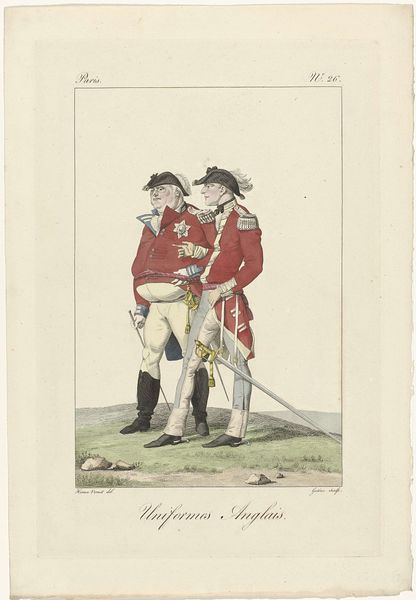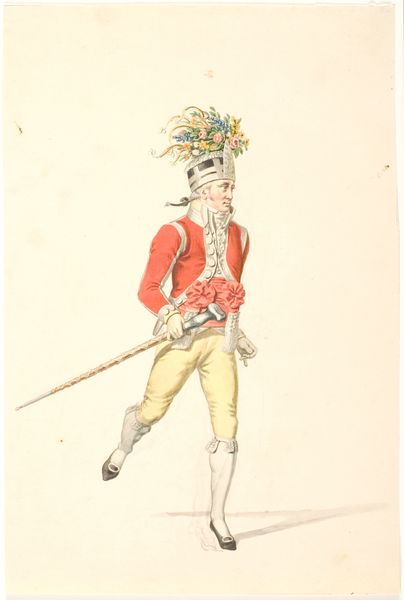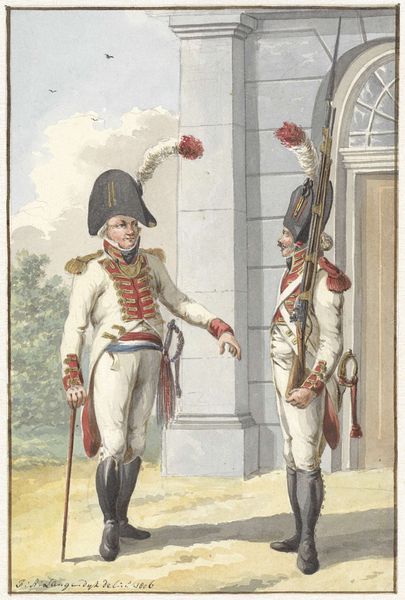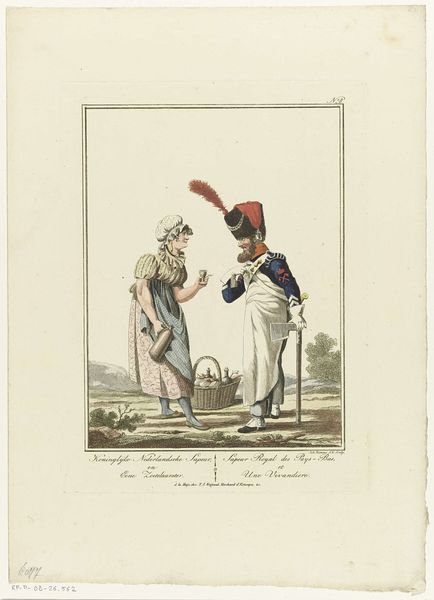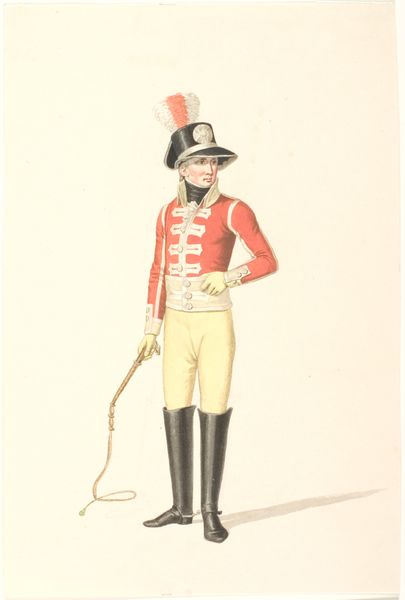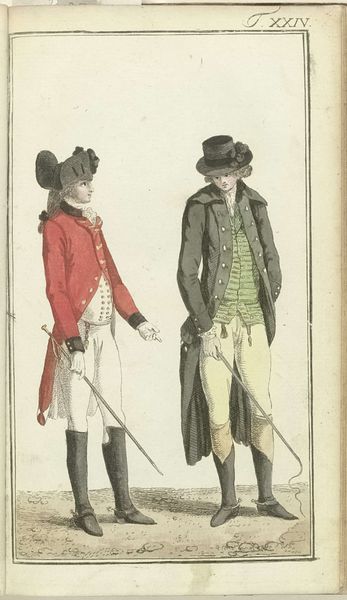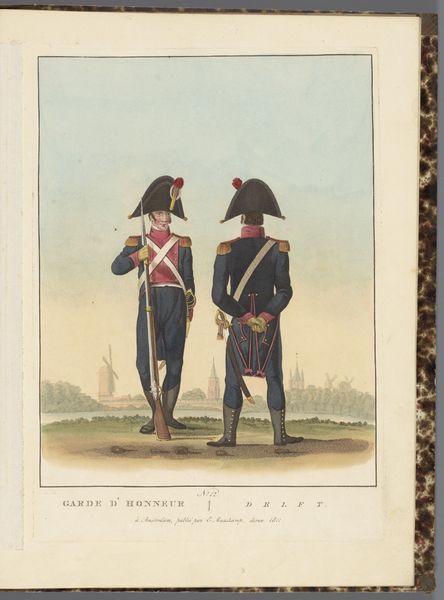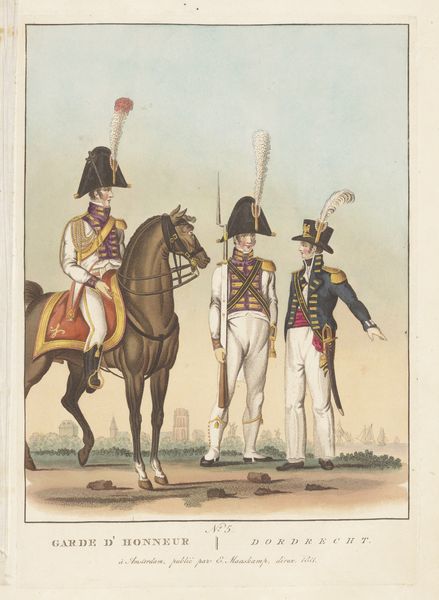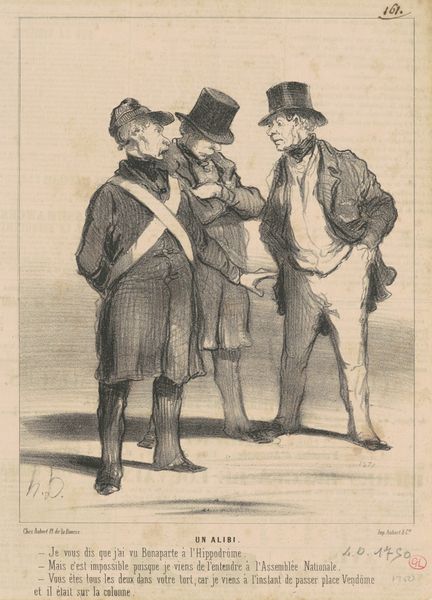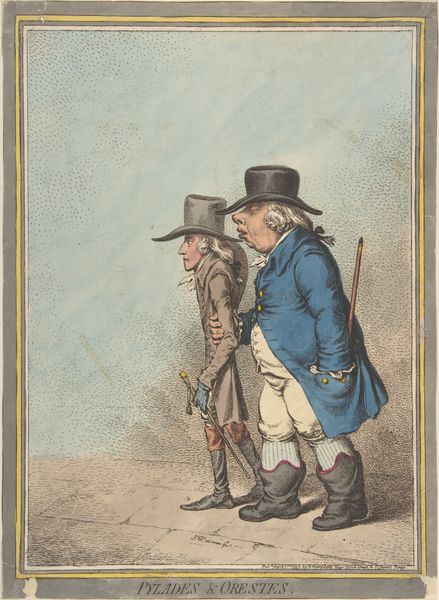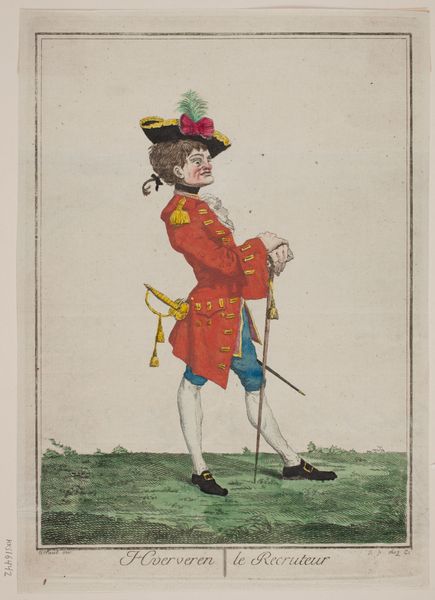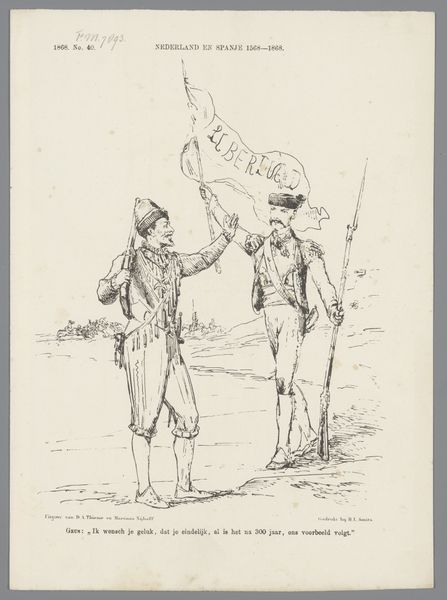
drawing, ink, pen
#
portrait
#
drawing
#
caricature
#
ink
#
romanticism
#
pen
#
genre-painting
#
history-painting
Dimensions: height 349 mm, width 252 mm
Copyright: Rijks Museum: Open Domain
Curator: Good morning! Let's turn our attention to this drawing titled "Two Officers Shaking Hands", crafted in 1814 by Louis Philibert Debucourt. What strikes you about it initially? Editor: Well, aside from the peculiar angles, I’m immediately drawn to how their costumes signal power. The tight trousers, the jackets bursting at the seams with adornment, and especially those feathery hats. How much did these men *weigh* after piling on these status symbols? Curator: That's a fantastic question. Consider Debucourt's access to materials. The use of pen, ink, and what appears to be colored washes speaks to the economic conditions of the era, allowing for accessible image production and broad distribution. Also note, caricature emerged as a popular method to criticize the elites, often fueled by cheap, accessible materials. Editor: Exactly, so here’s the crucial point. Even though Debucourt works within a Romantic style, which usually idealizes historical or genre scenes, this has some clear caricature qualities! We're dealing with depictions of English officers. This would have been during the height of tension between England and France – what were the socio-political currents that led Debucourt to focus his efforts here? What are these figures meant to represent to a contemporary audience? Curator: It’s also fascinating to consider the division of labor in creating an image like this. Was Debucourt himself mixing the inks and washes, or were there assistants? The consistency in line and color suggests a level of studio organization common to the era. Editor: True, and let's consider how the rise of print culture shaped perceptions of those in power. Dissemination becomes paramount! Were these images meant to inform public sentiment or, perhaps, solidify national identity during a period of intense conflict? Were the consumers primarily upper or middle class? It definitely leans towards the former. Look at those extravagant outfits; how readily available were they to most of society? Curator: It's the material expression of political ideologies. Each stitch, each brushstroke connects to the socio-economic framework within which the artist operates, making the artifact an extension of systems and relations. Editor: Precisely, by delving into who made it, why, and for whom, we not only dissect the mechanics of art creation, we illuminate art’s intricate connection with social power structures. The choice to create images such as this would tell its own fascinating story!
Comments
No comments
Be the first to comment and join the conversation on the ultimate creative platform.
